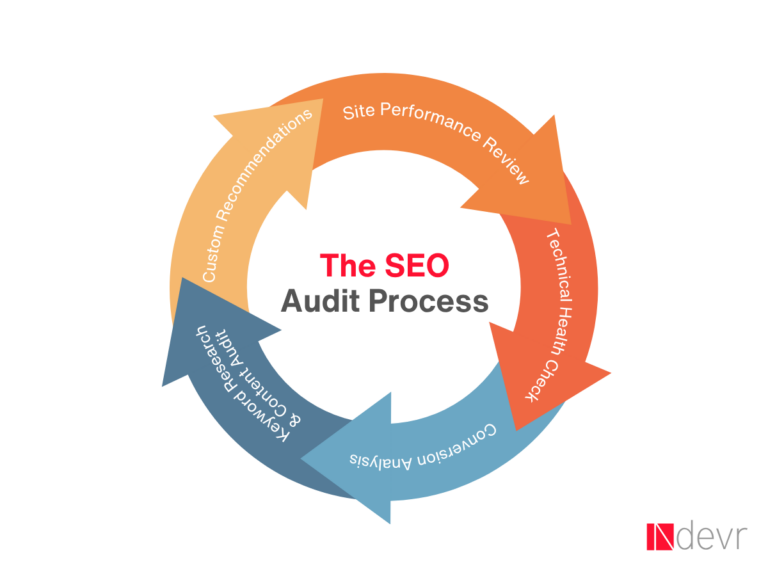For some manufacturers, SEO may not be a term that you think of all that often, however it’s becoming increasingly more important in regards to digital marketing for your website.
Why is SEO important to manufacturing? Put in simple terms, it makes sure that people are finding your website organically and is a great strategy for long-term growth, according to this article by Forbes. It ensures that your website is ranking on search engines like Google, bringing more potential customers to your site. But when you’re not optimizing your site for search engines, it can hurt your bottom line.
Having an outdated website, slow load times and poor search rankings can lower your conversion rates and send customers to your competitors. It’s even more important now for manufacturers to incorporate SEO. There’s growing competition and more people are doing their research before making B2B purchases. About 50% to 75% of B2B buyers are completing research before they even contact you, and 67% of the buyer’s journey is done online, according to this report by Worldwide Business research.
This is why doing a thorough SEO audit can help your B2B manufacturing business.
What Is an SEO Audit Service?
Essentially, an SEO audit is a comprehensive check-up on your website, looking into how it’s performing in search engines while also pointing out where things can be improved. There are a few different areas that we look at to determine how healthy your website is.
Technical SEO
Technical SEO is looking at the actual structure of your website to ensure that it’s running smoothly and can be accessed easily by search engines. First is literally analyzing the architecture of your website to see if it’s logical and easy for search engines to crawl. Part of this is also making sure it’s easy for users to navigate.
Additionally, it’s checking files, meta tags, and sitemaps to verify that search engines can get to all the important parts of the website and access the information that’s there. We also want to look at site speed and check loading times. Part of this is checking to see if there is anything on the website that could be slowing it down, like large photos or complex codes. Loading speed is an important ranking factor for engines like Google, as is interactivity and visual stability. Security is part of this as well—checking for any vulnerabilities and the HTTP implementation.
On-Page SEO
This is where we get into the actual content on your website. It’s important to look at keywords within the content, title tags, meta descriptions, headers, and image alt text. This is to make sure that they are geared toward your target audience as well as used naturally, rather than “keyword stuffing”.
On-Page SEO also includes looking at the content overall and analysing the quality, relevance and value. To a larger extent, we also look at the overall user experience such as the website design, navigation, and readability. We also review internal linking. We look at the structure to make sure that all important pages are easy to get to and that internal links are distributed evenly.
More and more sites are utilizing AI to help with many of these on-page aspects, such content tagging and categorization. There are multiple ways to use this resource, it’s a matter of finding the best way for your company and site.
Performance
Next we want to look at how quickly the website loads and is responsive to users. It goes a bit further than the technical SEO aspect, which mostly looks at all the technical things that could be slowing down the website. This includes how long the user perceives it is taking for things such as clicking buttons, submitting forms, scrolling and so on. It also considers how fast the website feels overall to the user. It may not actually be taking too long for the About page to load once clicked, but there could be something going on that makes the user perceive that it’s taking longer.
Mobile Usability
Mobile usability is incredibly important in today’s digital landscape. People aren’t only looking at your website on a PC or laptop anymore. They are now using mobile devices such as smartphones and tablets, so it’s important to gauge the mobile usability of a site. Within an SEO audit, this means checking to see if the website is responsive and runs just as smoothly on a phone as it does a computer monitor and that it’s a cohesive experience for the user.
Signs You Need an SEO Audit
If you’re thinking it might be time for an SEO audit, here are a few things to look for:
- Declining traffic. If there is a noticeable drop in organic traffic and the number of visitors to your site from search engines, you might want to look into an audit. Additionally, if you start seeing your ranking for important keywords start to drop or flatline.
- Slow site speed. If you’re starting to see pages loading slowly, this is a major sign. This could lead to user frustration, as well as higher bounce rates. It can also lead to lower search engine rankings.
- Poor conversion rates. Even if you’re still getting traffic, but users aren’t doing what you need them to do, such as making a purchase, this is a big sign you might need an audit.
- Missed leads. If people are coming to your website, but you’re losing them before they make a purchase, this could mean there’s some disconnect somewhere in the process.
Our Proven Audit Process
Our process is pretty straightforward, but let us walk you through it and let you know what you can expect.
Looking at Performance:
- User experience. We look at the overall structure of the website and anaylze how visually appealing it is and how easy it is for users to navigate.
- Page speed and Vitals. A website that loads slowly tends to rank lower in search engines. It also plays a role in user experience. We also look at Core Web Vitals.
Technical Analysis:
- Page Responsiveness. We evaluate how each page of the website responds across different devices and if it’s accessible.
- Error Resolution. Specifically, we look for any error pages and problematic URLs. This includes broken links and outdated redirects.
- Code optimization. We look at code to see areas where it might be slowing things down or preventing crawling.
- Security. We take a deep look at any potential vulnerabilities that could put your site at risk, as well as
Diving into Conversion Rates:
- Analyze Conversion Rates. We look to identify what could be keeping users from doing what you want them to do, like making purchases or signing up for newsletters.
Other Areas:
- Conduct keyword research.
- Identify target audience and personas.
- Update target keyword lists.
- Review content strategy and check for any thin, duplicate, or outdated content.
- Look for broken links or redirects that are outdated.
- Check the backlink profile.
- Review internal linking.
What You Get:
- You’ll know where you stand against industry standards.
- We provide fast fixes that you can start implementing right away.
- We also identify long-term risks that can threaten scale, reliability and trust.
From Audit to Action: Real Results
A manufacturer’s website had decent traffic, but it wasn’t converting well nor was it ranking for high-value industry keywords. The initial audit found that they had slow page load times, no HTTP encryption on key product pages, and poor mobile usability. They also had titles and meta descriptions that were duplicated, thin content, and missing alt text on product images. The audit also found that they weren’t targeting long-tail keywords and didn’t have a blog, while their competitors had much more technical content.
The technical fixes came first. This involved migrating to an HTTPS and implementing a CDN to speed up the site. The site also switched to a more mobile-responsive theme and all the broken links were fixed and optimized. All of the meta titles and descriptions were rewritten to target specific keywords and content on each product was expanded. The company launched a blog that focused on customer FAQs and industry trends.
The result was that organic traffic increased by about 168% after six months, and they went from having about 12 keywords ranking in the top 10 to 85. Page load times were faster, and conversion rates were up.
Not sure why your content isn’t ranking?
If your site is slow, buried in search results, or just not converting, it might be time for an SEO audit. We’ll help you identify what’s holding you back and what to fix first.Schedule a free discovery call to see if an SEO audit is the right next step: https://www.ndevr.io/contact/





